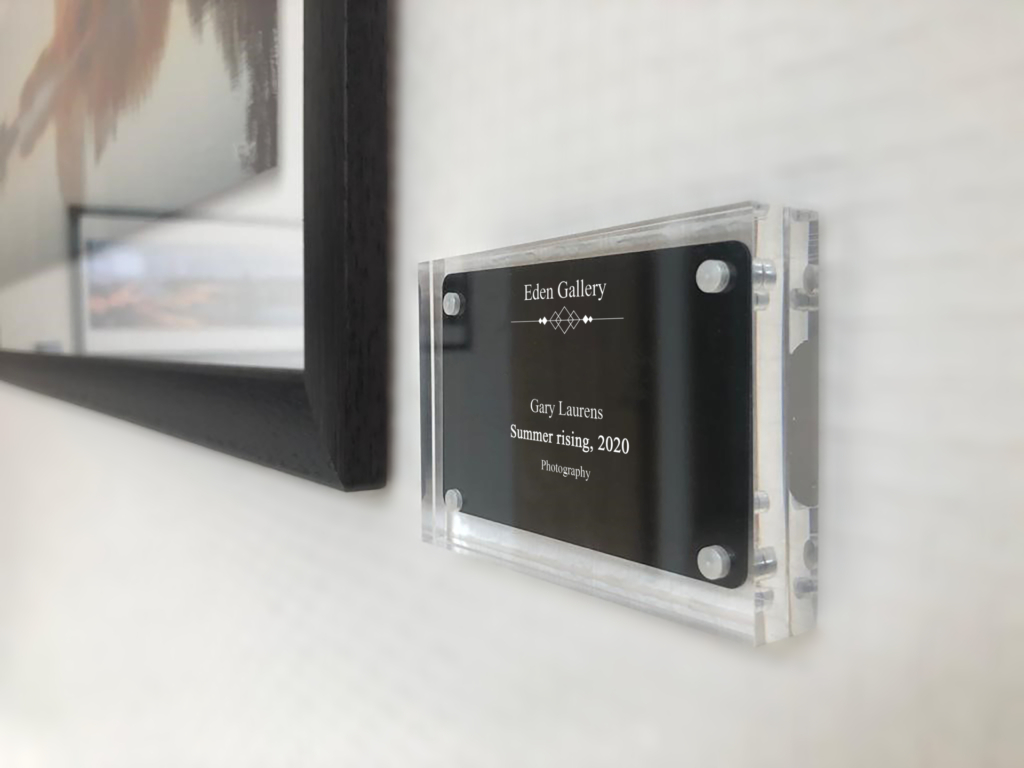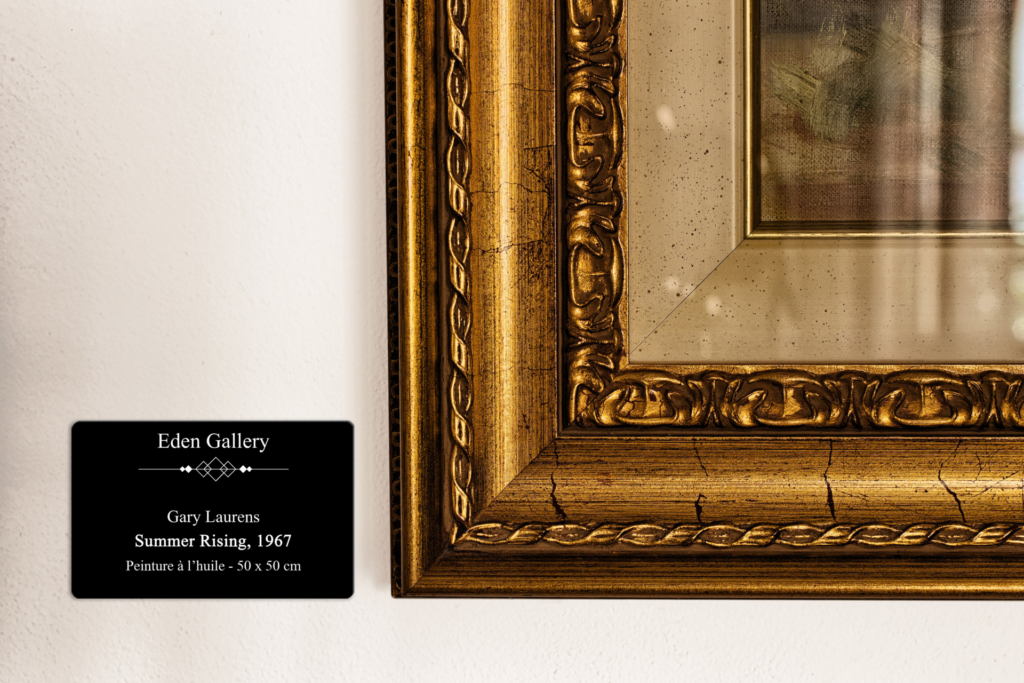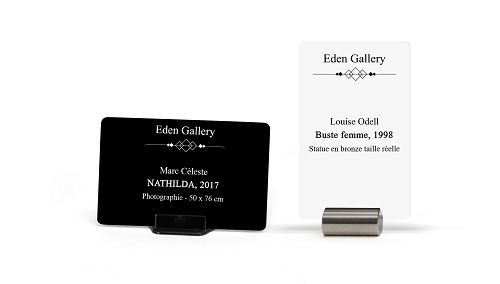How can you easily make professional-looking art labels for your exhibitions?
What are the labels placed next to artworks for?
Sometimes in antique shops, art galleries, or photography exhibitions, regrettably little information about the works on display is provided to the public, or even none at all.
And yet, visitors to an exhibition often wish to learn all they can about the artworks in order to fully grasp and appreciate them. But the artist, the gallery owner, or the antique dealer exhibiting the work is not always on hand to answer the questions of such art lovers.
Some artists intentionally shun labels, preferring to let their pieces speak for themselves.
However, museums and art professionals generally use exhibition labels as a way to provide visiting members of the public with the title of the piece and some information about it—whether it is a work of visual art, a sculpture, or an object.
Placed near the artwork, the purpose of the label is to provide information in a discreet and straightforward way, without distracting from the exhibited piece. The label often features the name of the artist, the title of the work, its dimensions, the techniques employed, and the year it was made. In other words, the label is the “identity card” of an artwork or object. The label is also sometimes referred to as a “tag”, a “cartouche”, a “sign”, or an “insert”.

In commercial galleries, an artwork’s label can be used to display the sale price, which can be reassuring for potential buyers. For them, a label featuring comprehensive information is a sign of transparency and trustworthiness. Exhibition labels can also be a way to stand out from the competition at trade fairs when you are just one among dozens of gallery exhibiting owners.
Exhibition labels are an important consideration and should not be neglected. They can even be an essential way to promote the image of an exhibition venue and set it apart.
How can you create exhibition labels that are up to professional standards?
There are several ways to create labels for your exhibition.
If you have opted for the homemade method, you have no doubt noticed some pitfalls. Homemade labels often fall short of the mark visually, which may be particularly striking when they are placed next to a work of art. Paper labels get torn and stained, they do not age well. Making them is time-consuming, and you inevitably have to do it all over again for each exhibition… What a waste of time!

Little known to professionals in the sphere of art and images, Evolis offers printing solutions that are ideal for creating and printing high-quality exhibition labels, as needed and in a matter of seconds.
By printing on a plastic card, you get a label that looks professional and enhances the presentation of any artwork. And you can use the same card again and again. You choose what information to display on the label and customize it to fit your image. To save time and avoid having to type in the details manually, you can import your list of artworks in an Excel file. Lastly, you print the labels yourself directly on location, one by one or as a series, whenever you need them. In less than 10 seconds, your exhibition label is printed and ready for immediate display!
The advantages of designing and printing your art gallery’s exhibition labels on plastic cards
By investing in this solution, you:
- Enhance the presentation of your paintings, artworks, photographs, sculptures, and objects
- Provide visitors with pertinent information in an appropriate format
- Enhance the visual impact of your presentation labels
- Give your gallery a more professional image
- Print your labels independently whenever you need to
- Make the process of producing your labels easy, no more headaches!
- Take advantage of an inexpensive solution: just a few dozen cents per label

The Evolis solution contains everything an art professional needs to get their first exhibition labels printed straight away:
- The Zenius printer
- Cardpresso software for customizing your labels
- Consumables: print ribbons and blank cards
To meet every need, Evolis offers both PVC and paper labels. PVC is a durable material that does not degrade in humid environments. Our FSC certified paper is sourced from sustainably managed forests and offers a plastic-free alternative that is just as elegant.